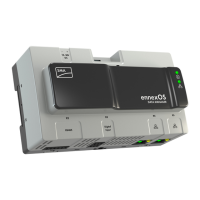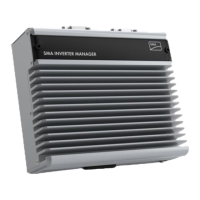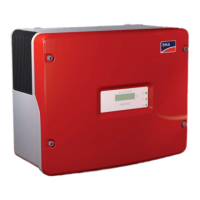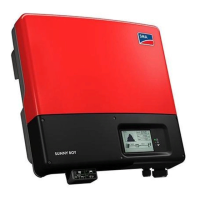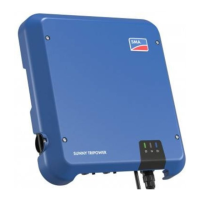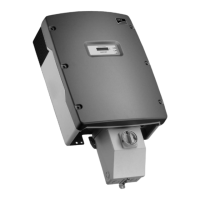16.3 Installation Information
16.3.1 Torques
Torques of the power connections:
Type of terminal lug Torque
Tin-plated aluminum terminal lug on copper bar 37Nm
Tin-plated copper terminal lug on copper bar 60Nm
Tin-plated aluminum or copper terminal lug on aluminum bar 37Nm for M12
10Nm for M8
Torques at panels, covers and grounding conductor:
Position Torque
Grounding conductors on the kick plates 8Nmto10Nm
Mounting the kick plates 2Nmto3Nm
Grounding conductor on the roof 14.2Nm
Mounting the ventilation grids on the roof 20Nm
Protective covers 5Nm
16.3.2 Reduction of DC Input Currents for DC Fuses
The DC inputs are fused with LV/HRC fuses. Thermal stress and alternating loads result in reduction factors which must
be taken into account when designing the DC cables.
The reduction factor 0.70 is applicable for regions where maximum ambient temperatures of 40°C are expected. If
higher ambient temperatures are expected, a reduction factor of 0.64 must be used.
Fusing Maximum DC short-circuit current I
SC_STC
(reduction factor 0.64 at ambient tem-
peratures exceeding 40°C)
Maximum DC short-circuit current I
SC_STC
(reduction factor 0.70 at ambient tem-
peratures up to and including 40°C)
125 A 80.0 A 87.5 A
160 A 102.4 A 112.0 A
200 A 128.0 A 140.0 A
250 A 160.0 A 175.0 A
315 A 201.6 A 220.5 A
400 A 256.0 A 280.0 A
When selecting the fuse size, always consider the short-circuit current of the connected PV array at standard test
conditions (I
SC_STC
).
The reduction factors apply for a maximum irradiation of 1,200W/m
2
(hourly average value of the horizontal global
radiation). In case the irradiation is higher, the reduction factor must be adapted linearly.
16 Appendix
SMA Solar Technology AG
System ManualMVPS22JP-SH-en-11252
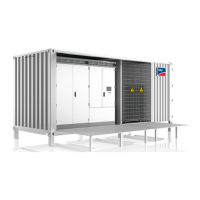
